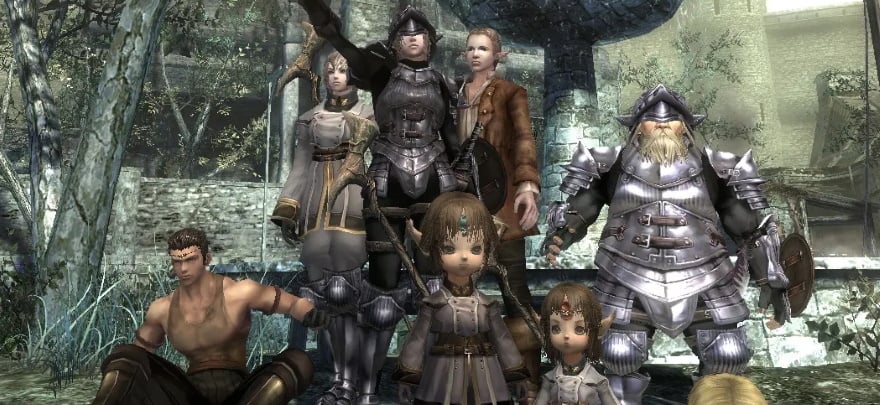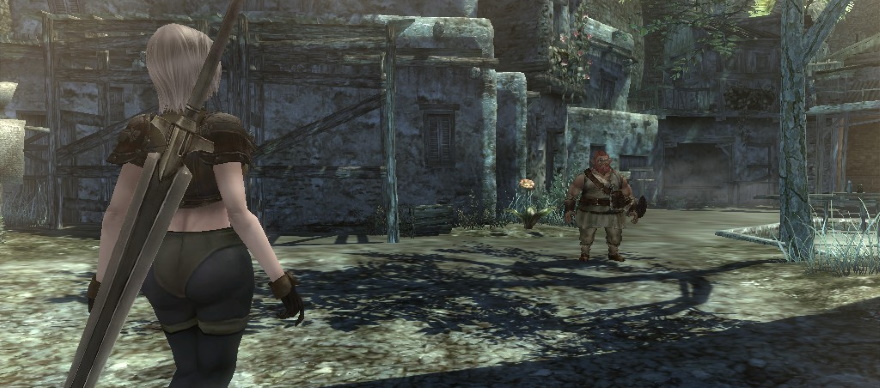
While the Wizardry series may not have the cultural cache that Ultima or Final Fantasy ended up with, nevertheless the dungeon crawling RPG series cultivated a sizable fan base. The first title by studio Sir-Tech came out in 1981, with seven more arriving to challenge players over the next two decades.
As I said, it was an extremely modest success in the west, but for whatever reason, Wizardry exploded in popularity when it was ported over to Japan. The series became so beloved, in fact, that dozens of spin-offs were created for various platforms, including GameBoy, PlayStation, and the SNES. There’s even a new mobile entry slated for early 2023 called Wizardry Variants Daphne, which I assume has to do with Scooby Doo.
With an established playerbase in Japan, various studios picked up the torch from the then-dissolved Sir-Tech to work on a “Wizardry Renaissance” initiative in 2009. This resulted in 10 titles releasing over the following five years — one of which happened to be an MMORPG.
Wizardry Online was created by Japanese MMO developer Gamepot (along with Headlock Inc), which was also known for CABAL Online, Trickster Online, and Mebiius Online. In 2008, it had merged with the owner of the Wizardry franchise, allowing it to seize upon the opportunity to make an online title in the series.
It should have been no surprise that Wizardry Online would make its debut in the country in which it was developed and had the greatest built-in fanbase. A Japanese open beta began in October 2011 with 100,000 players, giving the country a year and a half to hog it all to itself before Sony Online Entertainment announced that it was adding Wizardry Online to its library starting January 2013.
With muted, ugly visuals and a focus on delving through puzzle-laden dungeons, Wizardry Online already wasn’t your typical colorful JRPG romp. But what set it apart, both in marketing and in practice, was the inclusion of a permadeath system for its characters. Player characters who kicked the bucket had a chance of never waking up from the grim beyond, lending every encounter a greater deal of danger and import.
The permadeath system wasn’t as barebones as “one death = start over,” it should be mentioned. Players had a chance to book it to a rez shrine to be reborn, although that wasn’t ensured. If successful, you came back, but if not… you really did have to reroll. To better the odds of a rez, you could jettison loot or even pay real money to SOE for the privilege.
“Hardcore gamers will revel in the return of the complex dungeons that punctuated earlier iterations, and soon will find that the game is fraught with significant peril: Wizardry Online features permanent death, in which player characters can be removed from the game upon dying, creating a more immersive experience,” a 2011 press release boasted.
Because that wasn’t hardcore enough, the MMO also featured open world PvP with corpse looting and a bounty system. I know, it’s checking all the boxes for you!
Actually, there was a pretty interesting option during leveling that I should mention. Players who got to a certain point in their characters’ journey had an option to change to a different class — but retain a skill from their previous profession in the process.
Even with the controversial novelty of permadeath, Wizardry Online didn’t offer enough else to break out into a wider audience. The title struggled to gain any recognition or put out post-launch updates, which eventually led to one of the (then) shortest lifespans for a western MMO. A year and a half after SOE released it, Wizardry closed up shop in July 2014. However, the Japanese version continued to exist, limping on for another two years until it, too, closed in July 2016.
That might’ve been the end of the story if it wasn’t for some diehard fans doing what geeky diehard fans of niche MMORPGs tend to do — resurrect the title as a rogue server. The Wizardry Online Private Server took advantage of a huge data dump of the MMORPG’s game files in 2019 to whip up an emulator of the most recent version of the game. So yes, if you would like to see what this odd Wizardry offshoot looks like and how gaming with permadeath feels like, then you still have the option to do so today.
 Believe it or not, MMOs did exist prior to 2004! Every two weeks, The Game Archaeologist looks back at classic online games and their history to learn a thing or two about where the industry came from… and where it might be heading.
Believe it or not, MMOs did exist prior to 2004! Every two weeks, The Game Archaeologist looks back at classic online games and their history to learn a thing or two about where the industry came from… and where it might be heading.

















